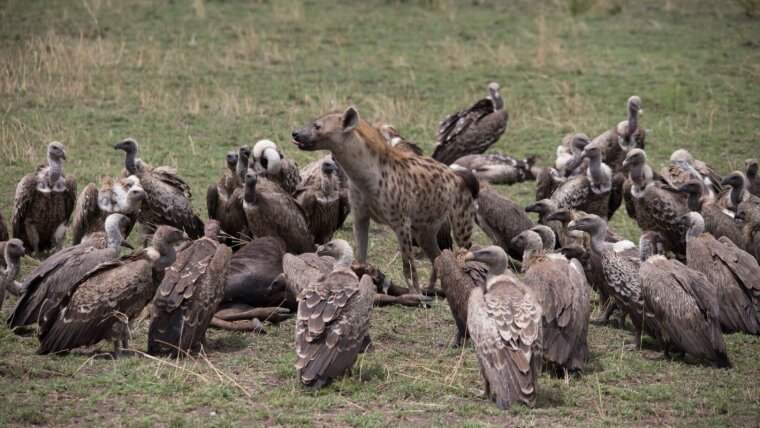
- Life
- Research
Published: | By: Christine Coester
A novel paper led by Prof. Dr Ulrich Brose of the Friedrich Schiller University Jena and the German Centre for Integrative Biodiversity Research (iDiv) is widening understanding of how species interact within ecosystems via the so-called ‚Internet of Nature‘. Published in ‘Nature Ecology and Evolution‘, the paper reveals that species not only exchange matter and energy but also share vital information that influences behaviour, interactions, and ecosystem dynamics – revealing previously hidden characteristics of natural ecosystems.
Traditionally, ecological studies have concentrated on material interactions, such as feeding, pollination, and seed dispersal. However, this new paper shines a light on the essential role of information exchange between species.
‚An understanding of processes in natural ecosystems without considering the flow of information through the Internet of Nature would be similar to trying to understand where and why goods are shipped in human societies without taking the Internet into account‘, explains first author Uli Brose, head of the Theory in Biodiversity Science research group at iDiv and University of Jena.
Integrating these two flows — information with traditional material linkages like food webs — alters the understanding of how disturbances spread within ecosystems (perturbation propagation) and how communities resist or recover from those disruptions (community stability).
Three types of information links
The researchers identify three types of information links within ecosystems: trophic information links, pure information links, and environmental information links.
Trophic information links involve cues exchanged between predators and prey—for instance, wolves use trails and visual sightings to locate elks, while elks respond to the presence of wolves by grouping and hiding in dense vegetation.
Pure information links capture interactions between species not directly involved in feeding, such as those sharing a common predator or resource. For example, when a hyena observes a circling vulture, it carefully watches the vulture's behaviour to infer the possible presence of a nearby carcass. This visual cue is part of the information flows that constitute the ‚Internet of Nature‘, shaping species’ movements and interactions.
Environmental information links allow species to adapt their movements and behaviours in response to signals from their surroundings, including climate cues or temperature variations. Examples include moths responding to light at night, spiders building their webs close to light sources, and chameleons changing their camouflage and colours in response to their environment.
Understanding interconnectedness amidst change
The authors also highlight how disruptions caused by human activities like artificial light, noise, and scent, known as sensory pollution, can alter information landscapes, reshaping behaviour and ecological dynamics.
‘Road traffic and industrial plants not only pollute the air, but also disrupt the vibration signals that ants, for example, use to coordinate themselves,’ explains co-author Dr Myriam Hirt from the University of Jena and iDiv. ‘This is just one example of how human activities can impair vibration or pheromone communication, which is essential for reproduction, foraging and social interactions in insects.’
These disruptions of signal transmission and information exchange can hinder species' ability to communicate, find resources, or adapt to their environment underscoring the need for conservation strategies that mitigate sensory pollution.
Building on research in food web ecology, the authors call for prioritising further investigation into information flow networks, such as identifying the senders and receivers of signals, understanding sensory capacity and decay rates, and collecting data through tools, like natural audioscapes and vibration profiles.
‘Accounting for the internet of nature will shift our perception of how animals, plants, and microbes act in the living world from a concept of passive particle movement as in physics or chemistry to a more realistic emphasis on living beings that produce and use information,‘ Brose adds. ‘The consequences of this shift go beyond the ecological theory playground and will have a substantial impact on how we protect not only the species' habitats but also their information pathways through the medium.‘
Original publication:
Brose, U., Hirt, M. R., Ryser, R., Rosenbaum, B., Berti, E., Gauzens, B., Hein, A. M., Pawar, S., Schmidt, K., Wootton, K., Kéfi, S. Embedding information flows within ecological networks. Nature Ecology & Evolution (2025). DOI: 10.1038/s41559-025-02670-2External link
Puschstraße 4
04103 Leipzig Google Maps site planExternal link